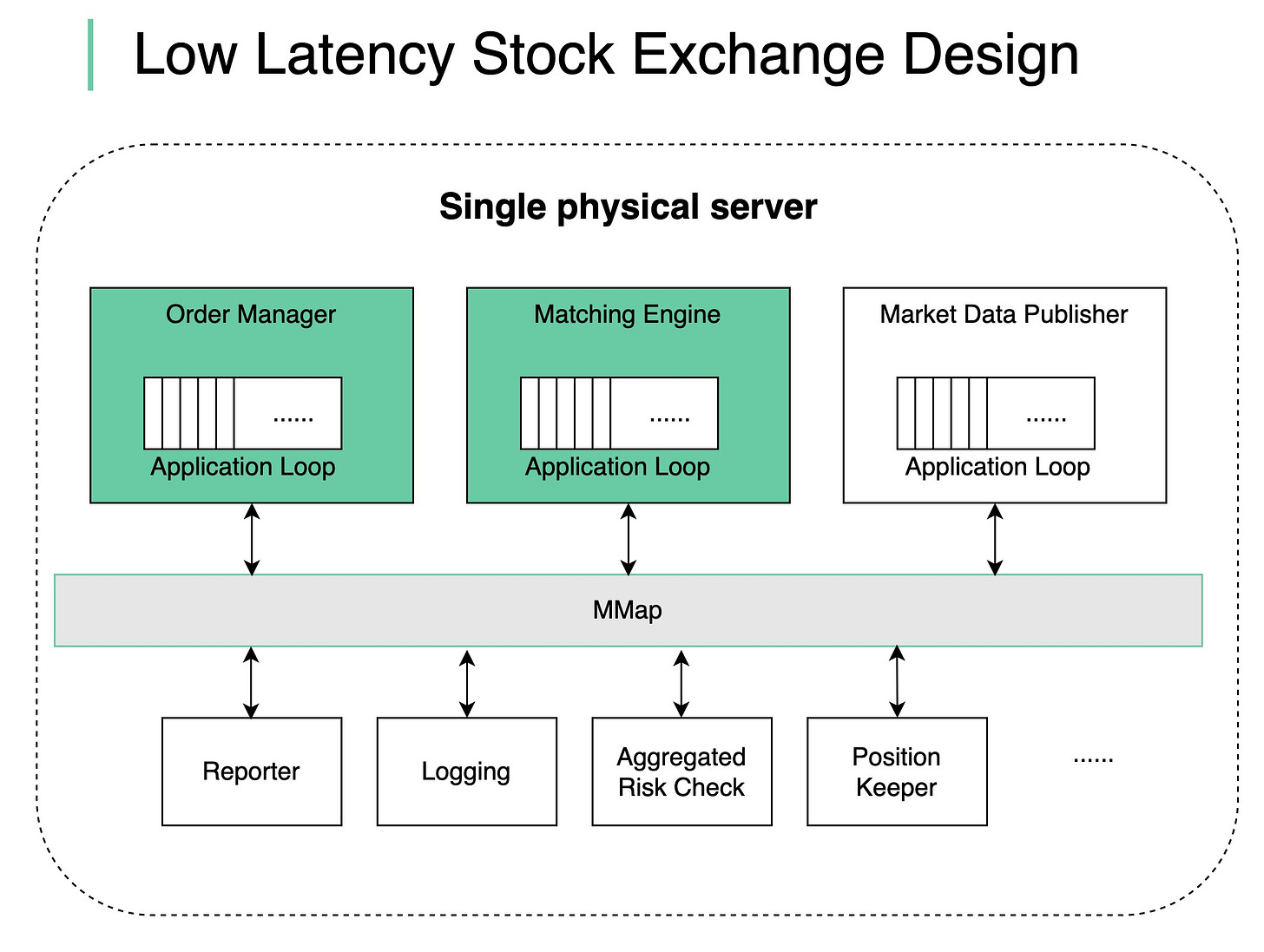Low latency stock exchange
How does a modern stock exchange achieve microsecond latency? The principal is:
Do less on the critical path
- Fewer tasks on the critical path
- Less time on each task
- Fewer network hops
- Less disk usage
For the stock exchange, the critical path is:
- start: an order comes into the order manager
- mandatory risk checks
- the order gets matched and the execution is sent back
- end: the execution comes out of the order manager
Other non-critical tasks should be removed from the critical path.
We put together a design as shown in the diagram:
- deploy all the components in a single giant server (no containers)
- use shared memory as an event bus to communicate among the components, no hard disk
- key components like Order Manager and Matching Engine are single-threaded on the critical path, and each pinned to a CPU so that there is no context switch and no locks
- the single-threaded application loop executes tasks one by one in sequence
- other components listen on the event bus and react accordingly
If you enjoyed those posts, you might like our system design interview books as well.
SDI-vol1: https://amzn.to/3tK0qQn
SDI-vol2: https://amzn.to/37ZisW9



Do you have any suggestions for this memory event bus?
I don't understand very well why do we need a single physical server (I think I got the point that networking adds latency), but what about scalability?